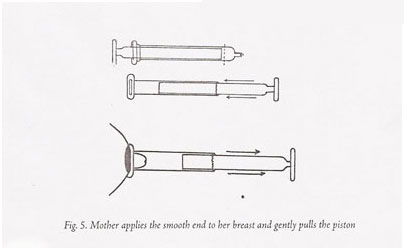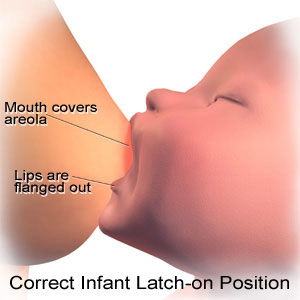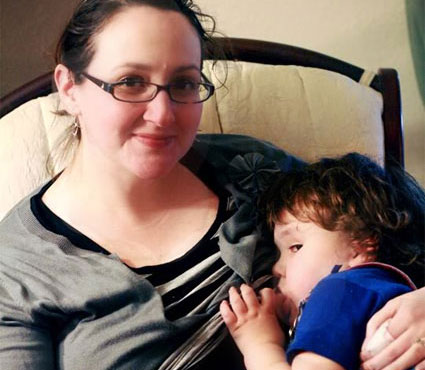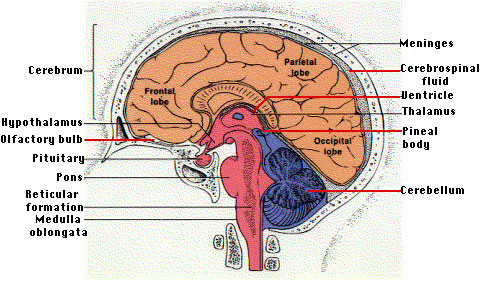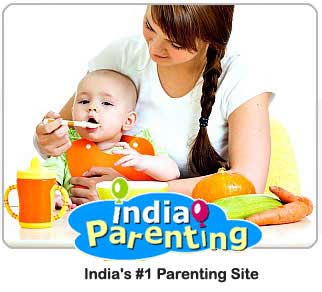By Dr. R.K Anand (MD, FIAP, FRCP, DCH)New mothers have so many doubts lingering in their minds regarding the feeding of the baby. They are concerned whether they are producing enough milk to satisfy the baby’s hunger. They also have many other worries. Here we have answered some common queries associated with breastfeeding. In this articleAm I getting enough milk for my baby?My breasts are small. Will my baby get enough milk?Can a woman with flat nipples or inverted nipples breastfeed?Can twins or premature babies also be fed adequately on breastmilk?Is there any drug that can increase milk supply?Am I getting enough milk for my baby? Check your baby’s urine output. A baby getting mother’s milk and nothing else (not even water) and who urinates more than 6 times in 24 hours is getting enough breastmilk. If you fail to count that, look at the colour of his urine. Light coloured urine is an indication that he is getting enough breastmilk. An occasional passage of dark urine can be ignored. For instance, if the baby is kept wrapped all the time, he may sweat and thus may pass dark urine. However, in the first few days at the hospital after delivery, the frequency of urine may be less as the colostrum has less amount of water in it. So in the first week, count the number of motions. If the baby passes 3 or more motions each day, it indicates that all is well. It is true that a two-month-old exclusively breastfed baby may pass a soft motion once every few days. This could be normal around that age but not in the first week to ten days after birth. The weight of the child also indicates if he was getting enough breastmilk or not. For the first six months of life, a baby should gain at least 500 grams each month, or 125 grams each week (one kilogram per month is not necessary). But remember that most babies lose weight in the first few days after birth. They regain their birth weight when they are about 10 days old. Make sure the weighing machine is accurate and the baby is weighed on the same weighing scale, either naked or with the same type of clothes on each occasion. Here it may also be mentioned that when your baby is about 6 weeks old, your breasts may feel soft. This only shows that the supply and demand have balanced. Again, look at the diapers and the weight of the child to ensure that you are producing enough milk for your baby. My breasts are small. Will my baby get enough milk? This is just an old wives tale with no basis in truth. The size or shape of your breasts has nothing to do with the quality or quantity of milk dispensed. Milk-producing glands in all women are in the back part of the breasts, behind the areola. Their location is the same, regardless of the size of the mothers breasts. The size depends upon the supporting tissue or fat in the breast. Can a woman with flat nipples or inverted nipples breastfeed? Successful breastfeeding does not depend on the size of the breast or the size of the nipple. Just touch or gently rub your nipple with your fingers. If it becomes slightly more prominent, it is protractile. A flat or a small nipple that becomes prominent (even a little) on being touched is normal. So the size of the ‘resting’ nipple is not important. In rare cases, a nipple does not protract. If you try and pull it out, it goes deeper into the breast. This is an inverted or retracted nipple. The baby has even more difficulty suckling from an engorged breast with an inverted nipple. In such a case, the mother should express the milk until the breast feels soft. This helps the baby to take enough of the breast in her mouth. Treatment for Inverted Nipples: Some mothers with inverted nipples may need the help of a disposable syringe (See the Figure Above). The nozzle end of a 10 ml plastic disposable syringe is cut off (step one). This piston is introduced from the ragged cut end side (step two). The mother then applies the smooth end to her breast and pulls on the piston gently and holds it in that position for about a minute (step three). The nipple protrudes out into to the syringe. The mother reduces the traction while releasing the syringe. The nipple stays protruded for some time; and the baby is immediately put to the breast. As the nipple is easily taken into the mouth, the baby is able to suckle in a proper position. The nipple retracts again after a while, but not to the same extent. The procedure can be repeated several times a day for a couple of days. This corrects the retraction permanently in almost all cases. Can twins or premature babies also be fed adequately on breastmilk? Frequent suckling can provide enough milk for twins. In short, one breast, when frequently emptied, can provide enough milk for one baby Premature babies who can swallow but cannot suckle are given expressed breastmilk in a cup or a bondla or with a spoon. Our experience shows us that it is more practical to feed with an ordinary cup, small glass or a bondla (also called paladai) than with a spoon. There is no risk of aspiration into the breathing passage in feeding with a small glass. The mother holds the baby in her lap, lifts the head higher than the rest of the body and gradually lets her sip from the glass. The milk should not be poured into the mouth. Sometimes, if a baby is too weak to swallow, she is given expressed breastmilk through a stomach tube. It is important for the baby to start suckling at the breast as soon as she is able to do so. Premature babies need more proteins. It is Nature’s wonder that the breastmilk of the mother who delivers prematurely has higher protein content than a mother who delivers at full term. Is there any drug that can increase milk supply? Frequent suckling in combination with the avoidance of bottlefeeding, increases the production of milk. While there are some drugs like Metoclopramide (available as Perinorm, Maxeron or Reglan) that may help increase the milk supply, the natural method of frequent breastfeeding is preferable. However, the purpose will be defeated if the baby is being bottle-fed at the same time.Which breastfeeding concerns do new mothers have? How to know if the baby is getting enough milk? How can women with inverted nipples breastfeed? Discuss here.Disclaimer:- Dr. R. K. Anand has vetted this article for medical accuracy. Please note that ads displayed on this page do not reflect his views.
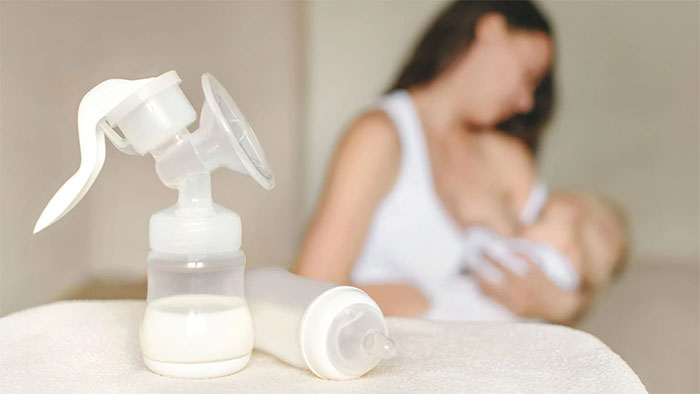
 By Dr. R.K Anand (MD, FIAP, FRCP, DCH)
By Dr. R.K Anand (MD, FIAP, FRCP, DCH)Am I getting enough milk for my baby?
Check your baby’s urine output. A baby getting mother’s milk and nothing else (not even water) and who urinates more than 6 times in 24 hours is getting enough breastmilk. If you fail to count that, look at the colour of his urine. Light coloured urine is an indication that he is getting enough breastmilk. An occasional passage of dark urine can be ignored. For instance, if the baby is kept wrapped all the time, he may sweat and thus may pass dark urine.
However, in the first few days at the hospital after delivery, the frequency of urine may be less as the colostrum has less amount of water in it. So in the first week, count the number of motions. If the baby passes 3 or more motions each day, it indicates that all is well. It is true that a two-month-old exclusively breastfed baby may pass a soft motion once every few days. This could be normal around that age but not in the first week to ten days after birth.
The weight of the child also indicates if he was getting enough breastmilk or not. For the first six months of life, a baby should gain at least 500 grams each month, or 125 grams each week (one kilogram per month is not necessary). But remember that most babies lose weight in the first few days after birth. They regain their birth weight when they are about 10 days old. Make sure the weighing machine is accurate and the baby is weighed on the same weighing scale, either naked or with the same type of clothes on each occasion.
Here it may also be mentioned that when your baby is about 6 weeks old, your breasts may feel soft. This only shows that the supply and demand have balanced. Again, look at the diapers and the weight of the child to ensure that you are producing enough milk for your baby.
My breasts are small. Will my baby get enough milk?
This is just an old wives' tale with no basis in truth. The size or shape of your breasts has nothing to do with the quality or quantity of milk dispensed. Milk-producing glands in all women are in the back part of the breasts, behind the areola. Their location is the same, regardless of the size of the mother's breasts. The size depends upon the supporting tissue or fat in the breast.
Can a woman with flat nipples or inverted nipples breastfeed?
Successful breastfeeding does not depend on the size of the breast or the size of the nipple. Just touch or gently rub your nipple with your fingers. If it becomes slightly more prominent, it is protractile. A flat or a small nipple that becomes prominent (even a little) on being touched is normal. So the size of the ‘resting’ nipple is not important.
In rare cases, a nipple does not protract. If you try and pull it out, it goes deeper into the breast. This is an inverted or retracted nipple. The baby has even more difficulty suckling from an engorged breast with an inverted nipple. In such a case, the mother should express the milk until the breast feels soft. This helps the baby to take enough of the breast in her mouth.
Treatment for Inverted Nipples: Some mothers with inverted nipples may need the help of a disposable syringe (See the Figure Above). The nozzle end of a 10 ml plastic disposable syringe is cut off (step one). This piston is introduced from the ragged cut end side (step two). The mother then applies the smooth end to her breast and pulls on the piston gently and holds it in that position for about a minute (step three). The nipple protrudes out into to the syringe. The mother reduces the traction while releasing the syringe. The nipple stays protruded for some time; and the baby is immediately put to the breast. As the nipple is easily taken into the mouth, the baby is able to suckle in a proper position.
The nipple retracts again after a while, but not to the same extent. The procedure can be repeated several times a day for a couple of days. This corrects the retraction permanently in almost all cases.
Can twins or premature babies also be fed adequately on breastmilk?
Frequent suckling can provide enough milk for twins. In short, one breast, when frequently emptied, can provide enough milk for one baby
Premature babies who can swallow but cannot suckle are given expressed breastmilk in a cup or a bondla or with a spoon. Our experience shows us that it is more practical to feed with an ordinary cup, small glass or a bondla (also called paladai) than with a spoon. There is no risk of aspiration into the breathing passage in feeding with a small glass. The mother holds the baby in her lap, lifts the head higher than the rest of the body and gradually lets her sip from the glass. The milk should not be poured into the mouth.
Sometimes, if a baby is too weak to swallow, she is given expressed breastmilk through a stomach tube.
It is important for the baby to start suckling at the breast as soon as she is able to do so.
Premature babies need more proteins. It is Nature’s wonder that the breastmilk of the mother who delivers prematurely has higher protein content than a mother who delivers at full term.
Is there any drug that can increase milk supply?
Frequent suckling in combination with the avoidance of bottlefeeding, increases the production of milk. While there are some drugs like Metoclopramide (available as Perinorm, Maxeron or Reglan) that may help increase the milk supply, the natural method of frequent breastfeeding is preferable. However, the purpose will be defeated if the baby is being bottle-fed at the same time.
Which breastfeeding concerns do new mothers have? How to know if the baby is getting enough milk? How can women with inverted nipples breastfeed? Discuss here.Disclaimer:- Dr. R. K. Anand has vetted this article for medical accuracy. Please note that ads displayed on this page do not reflect his views.














